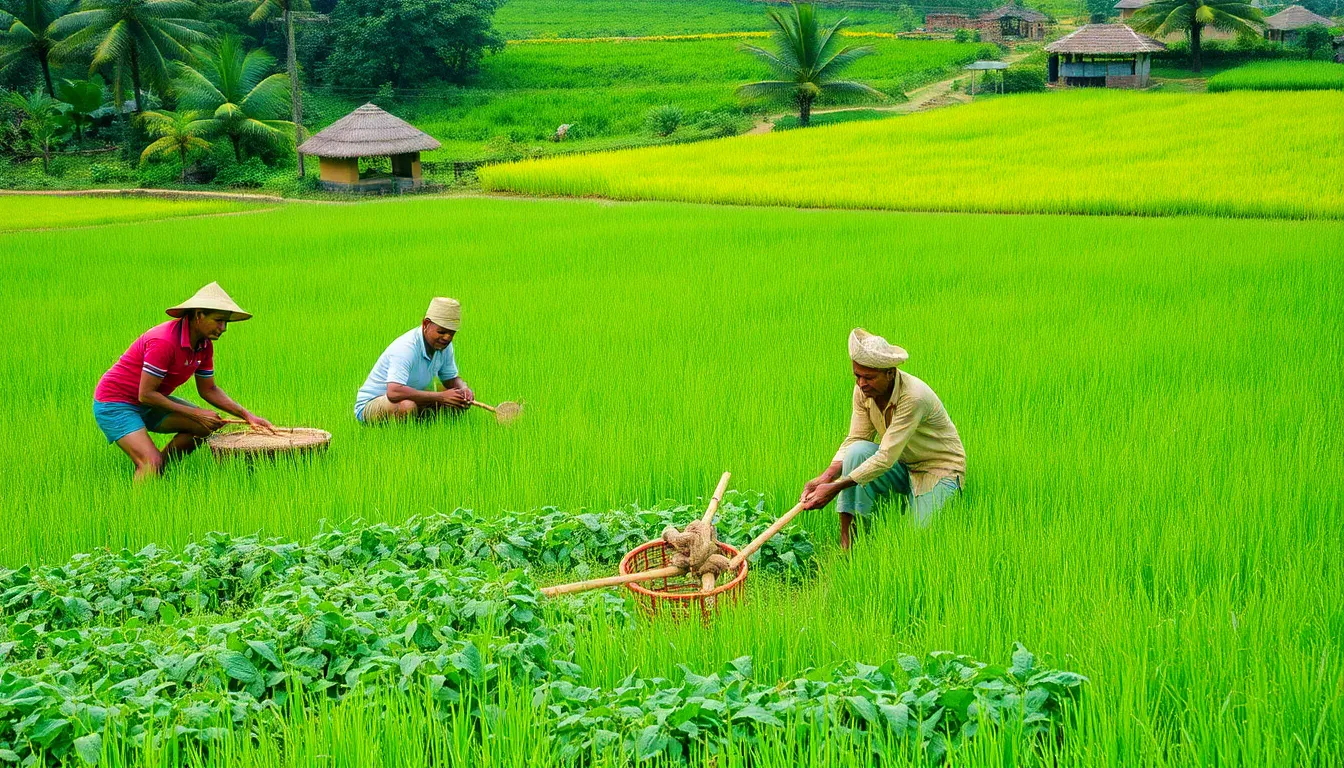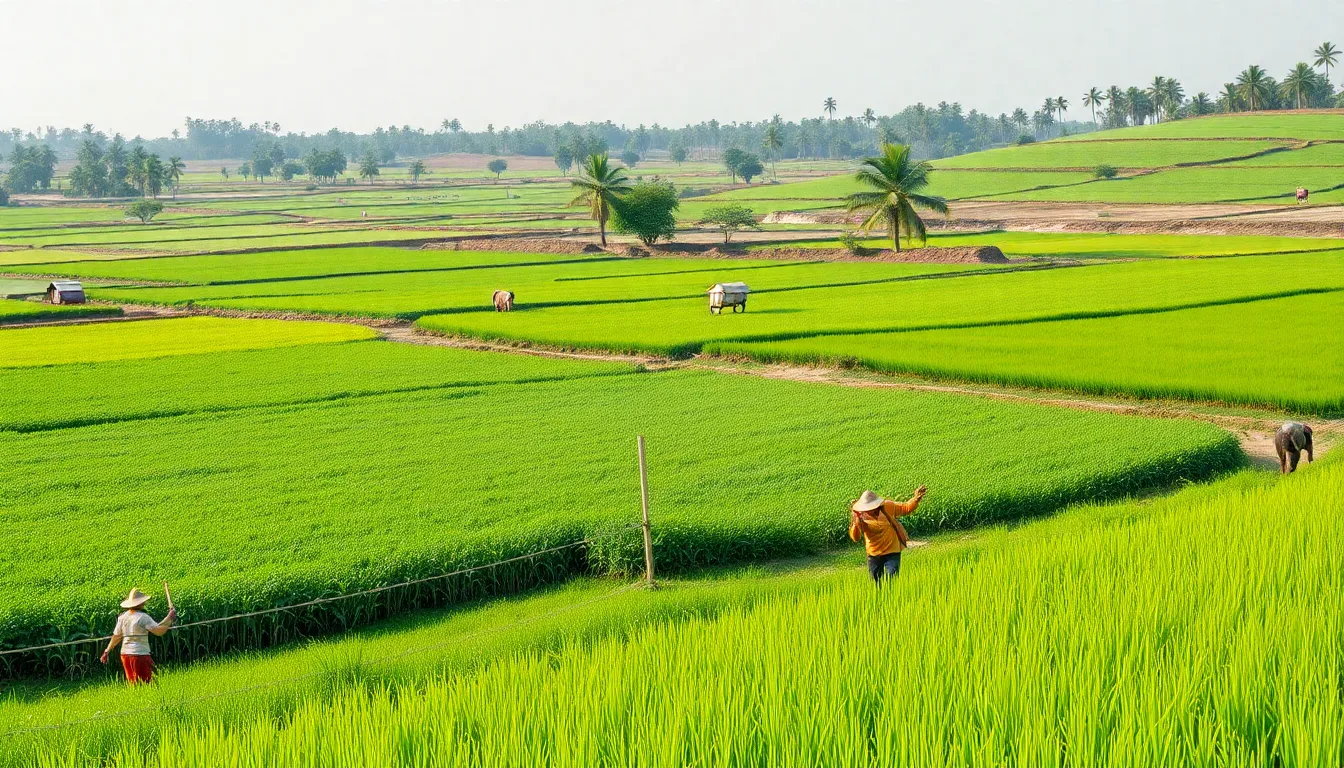Table of Contents
ToggleVettakarikal, a traditional practice rooted in the rich cultural heritage of South India, offers a fascinating glimpse into the region’s agricultural history. This unique method of cultivating certain crops not only reflects the ingenuity of local farmers but also highlights the deep connection between the land and its people.
As the world increasingly shifts towards modern agricultural techniques, understanding the significance of vettakarikal becomes crucial. It showcases sustainable practices that have stood the test of time, emphasizing the importance of biodiversity and local ecosystems. Exploring this age-old technique reveals not just a farming method but a way of life that has shaped communities for generations.
Overview of Vettakarikal
Vettakarikal exemplifies a unique agricultural practice rooted in South India’s cultural landscape. This traditional method involves specific farming techniques that enable efficient crop production while preserving the local environment. Farmers rely on ancestral knowledge, showcasing the intricate relationship between their communities and the land.
Key aspects of Vettakarikal include:
- Crop diversity: Farmers cultivate a variety of crops, ensuring a balanced ecosystem and reducing the risk of pests and diseases.
- Sustainable practices: Techniques prioritize minimal chemical usage and emphasize organic inputs, promoting soil health and biodiversity.
- Water management: Efficient irrigation methods, such as rainwater harvesting, enhance water conservation and maintain environmental integrity.
- Community collaboration: Local farmers often work together, sharing resources and knowledge, fostering a sense of unity and cooperation.
Vettakarikal highlights the resilience and adaptability of farmers in the face of modern agricultural challenges. Recognizing its role in promoting sustainable agriculture underscores the importance of preserving this practice for future generations.
Historical Significance
Vettakarikal holds substantial historical significance in the cultural narrative of South India. This traditional agricultural practice reflects the ingenuity of local communities and their enduring relationship with the land.
Origins and Cultural Context
Vettakarikal dates back centuries, rooted in the agrarian lifestyle of South India. It emerged from the necessity for sustainable farming practices that align with the region’s climate and soil conditions. Local farmers developed methods based on extensive knowledge of crop cycles, biodiversity, and natural resource management. This practice correlates deeply with cultural traditions, as rituals and festivals often revolve around agricultural cycles, reinforcing the connection between farming and community life.
Evolution Over Time
Vettakarikal has adapted over time in response to changing environmental and socio-economic circumstances. Originally reliant on traditional knowledge, it has integrated modern insights while maintaining its core sustainable principles. The introduction of contemporary techniques, such as advanced irrigation and improved seed varieties, complements traditional methods without compromising their essence. Adaptation continues, ensuring that Vettakarikal remains relevant in today’s agricultural landscape, supporting resilience against challenges like climate change and market fluctuations.
Characteristics of Vettakarikal
Vettakarikal exhibits unique features that reflect the ingenuity of traditional agricultural practices in South India. These characteristics encompass material selection, design attributes, and craftsmanship techniques that contribute to its sustainability and effectiveness in boosting local ecosystems.
Material and Design
Vettakarikal utilizes locally sourced materials, promoting sustainability and reducing the carbon footprint associated with transportation. Common materials include bamboo, coconut husk, and clay, which integrate seamlessly into the natural environment. The design emphasizes functionality and adaptability, allowing structures to withstand seasonal weather changes and varying soil conditions. The circular shape of techniques, like bunds and water retention structures, enhances water conservation and supports biodiversity by creating micro-habitats for various species.
Craftsmanship Techniques
Vettakarikal craftsmanship involves age-old techniques passed down through generations. Artisans employ hand tools and traditional methods, ensuring each element reflects the community’s cultural heritage. Techniques such as weaving and coiling are common, allowing for durable construction that withstands the rigors of agricultural use. Farmers maintain a close relationship with the tools and materials, utilizing their knowledge of local resources to create solutions tailored to specific environmental conditions. This dedication to craftsmanship ensures that Vettakarikal remains a resilient and effective farming practice, preserving agricultural knowledge while adapting to modern challenges.
Uses and Applications
Vettakarikal serves important roles in both traditional agricultural practices and modern farming contexts. It embodies sustainable methodologies critical for environmental resilience and community well-being.
In Traditional Practices
In traditional practices, Vettakarikal centers around crop diversity and ecological balance. Farmers cultivate various crops in tandem, enhancing soil health and mitigating pest outbreaks. This practice relies on locally adapted seeds, which promote genetic diversity and increase resilience against climate variability. Traditional rituals connected to farming reinforce community bonds, fostering collaboration and shared responsibility among farmers. The emphasis on minimal chemical usage preserves soil fertility and maintains clean water sources for future generations.
In Modern Context
In modern contexts, Vettakarikal adapts to incorporate advanced agricultural techniques while retaining its core sustainable principles. Farmers utilize modern irrigation systems alongside rainwater harvesting methods, maximizing water efficiency. The integration of improved seed varieties leads to enhanced yields while maintaining soil health. Organic farming methods, rooted in Vettakarikal, appeal to environmentally conscious consumers, boosting market demand for sustainably grown produce. Community-driven initiatives promote knowledge sharing and cooperative efforts, supporting the revitalization of this practice in contemporary agricultural settings.
Conclusion
Vettakarikal stands as a testament to the rich agricultural heritage of South India. Its blend of traditional wisdom and modern techniques showcases a sustainable approach to farming that benefits both the environment and local communities. By preserving this practice, farmers not only honor their cultural roots but also contribute to a resilient agricultural future.
As Vettakarikal evolves, it continues to inspire a new generation of farmers to embrace sustainable practices. This commitment to biodiversity and community collaboration ensures that the essence of Vettakarikal will endure, fostering a deeper connection between people and the land. The legacy of Vettakarikal is a valuable reminder of the importance of sustainable agriculture in today’s rapidly changing world.





